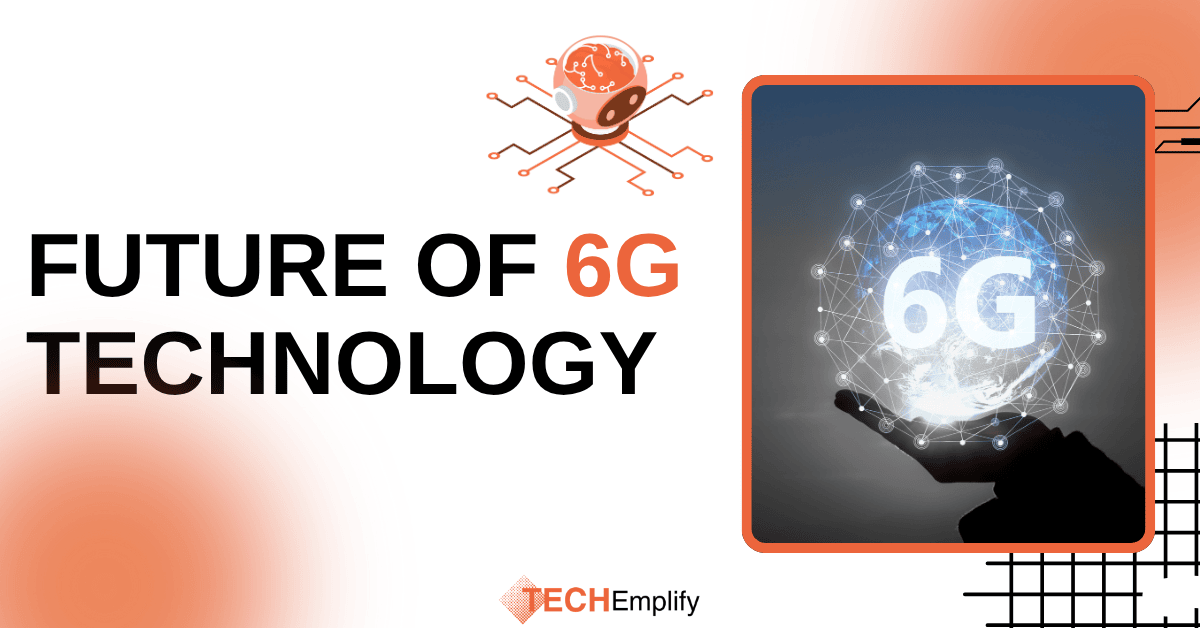Technology never stops upgrading. After 5G, the world is going to launch 6G. It plans faster connections. It will be smart and help us in different ways. Nowadays, in 2025, researchers are trying to make real progress to launch 6G. Let me explain what that means.
Introduction of 6G?
6G is the upcoming generation of mobile networks technology. It will be faster than 5G. With 6g they try to reach speeds up to 1TB/second. It will also be almost instant. But it is more than speed. 6G will use built-in intelligence. It will help us understand the world around us. It will connect devices, cars, cities and everything.
Speed of 6G?
In laboratory tests, experts have hit speeds around 1 terabit per second. That is much faster than current 5G. Think, you can download a full HD movie within a second. In early experiments, 6G can do that.
These tests use special high frequency signs. They go beyond what 5G uses. But these waves do not travel far. They can’t go through walls easily. To fix that, engineers are working on smarter antennas. These can focus signals more precisely.
Secret behind smartness of 6G
It’s not like older connections, 6G will use built-in intelligence technology. This means the network doesn’t need instruction; it can apply on its own. It can solve problems before you notice them. It can predict heavy use and adjust. It can save itself from attacks.
This intelligence is called AI Native. It means AI is part of the network design. The network will learn. It will adjust paths for data. It will protect devices. It will keep connections steady, even in busy places.
Sensing and Communication Together
A key feature of 6G is that it will fetch its environment while sending data. This is called “integrated sensing and communication.” The network will serve as a radar. It can fetch cars, people, and weather. It can recognize health signs like breathing and heart rate.
This means one network can do two jobs, Talk to devices and monitor everything around. This helps in smart cities, autonomous cars, and health care.
Imagined Use Cases for 6G
Here are a few examples that show what 6G might make possible:
- Hologram calls: Instead of video calls, you could see 3D holograms of friends or coworkers in front of you.
- Smart factories and cities: Machines and lights could talk to each other instantly and safely.
Drone teams: Swarms of drones could work together to inspect buildings or plant roads. - Digital twins: Entire buildings or cities could be recreated in virtual space. Simulations could help us plan real world changes.
These ideas give the future vibes. But in 2025, tests and prototypes are in processing.
What is Happening Right Now?
- Research Labs and Universities: Labs all over the world are building antennas and radio systems for 6G. These devices focus signals and use low energy.
- Pilot Projects: In some test labs, teams are doing live tests. They are testing antennas, network chips, and intelligent systems.
- Standard Planning: Global groups are starting to set the rules for 6G. They decide on frequencies and design. These rules will be completed at the end of 2028.
- Industry Shows: At recent events, companies have shown working prototypes. Some showed phones and networks that can reach near TB speeds. They also demonstrate how AI can manage networks better.
What Challenges Does 6G Face?
Every new tech has problems. Here are some big ones for 6G:
- Signal Reach
High speed signals do not travel far. They need special antennas and many connection points. - Energy Use
Early prototypes use more power than 5G setups. Engineers are working on more efficient chips and design. - Cost
Building new networks consumes a lot of costs. Cities and networks need many new base stations and upgrades. - Global Standards
Countries must agree on how to share frequencies. Competing tech firms must work together in a fair manner. - Privacy and Safety
Since 6G can fetch the environment, it raises privacy concerns. Rules must protect personal space and data.
Expected launch date of 6G?
According to rumors following are the dates for launch:
- 2025: Many companies are testing core parts. Early design work is in processing.
- 2028: Global rules and technical standards should be complete.
- 2030: First real 6G networks may launch. We could see early commercial use by this time.
So, we have at least five more years before 6G launches. It will take time. But the journey is already in processing.
Summary Table
| Feature | 6G Goal |
| Speed | Up to 1TB/Second |
| Network Intelligence | AI Native design and self adaption |
| Sensing | Radar like sensing + communication |
| Applications | Holograms, smart cities, drones |
| Challenges | Signal range, cost, privacy |
| Timeline | Standard by 2028, rollout by 2030 |
Why 6G Important for you
- Fast Virtual Experiences: Watching some one’s feels like real life.
- Fast Data and Better Efficiency: Big files download within seconds.
- Safer Cities and Homes: The network can fetch fire, floods, or intruders.
- Smart Machines: Robots, cars, systems will react faster and more safely.
- Seamless Earthwide Coverage: From deep forests to skyscrapers 6G will reach more places.
In short, 6G will make the internet more intelligent, fast, and a real example of life.
Final Thoughts
Life is going faster than ever. Fast growing advancement in AI Technology is making everything fast like 6G Technology. With this technology we can automate our work, meetings and every task we are performing manually.
Are you ready to go with the flow with this technology?





